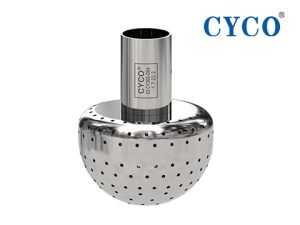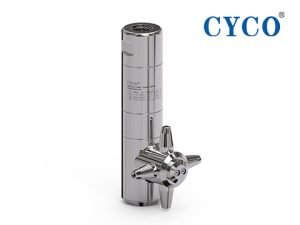Spiral nozzle is a special kind of nozzle whose unique design and structure make it widely used in many industries and fields. Models and parameters of spiral nozzles are important for selection and use in different application scenarios.
This article will detail the models and parameters of spiral nozzles to help readers understand better and choose the right one.

Models
Spiral nozzles are available in various models and can be categorized in different ways as follows:
1. By spray direction: lateral nozzles, radial nozzles, upward nozzles and downward nozzles.
2. By materials: stainless steel nozzles, plastic nozzles and ceramic nozzles.
3. By specifications: standard nozzles, wide-angle nozzles, narrow-angle nozzles and multi-hole nozzles.
Parameters
1. Flow rate
One of the important indicators, usually expressed in flow coefficients. The greater the flow coefficient, the more fluid passes through the nozzle per unit of time.
2. Pressure
One of the important parameters, which directly affects the spraying effect of the nozzle. Pressure parameters include working pressure range, working pressure loss and back pressure.
3. Angle
One of the important parameters that indicates the angular range that can be covered by the fluid ejected from the nozzle. The larger the spray angle, the wider the coverage of the nozzle.
4. Shape
One of the important parameters, which indicates the shape of the fluid ejected from the nozzle. Depending on the need, different shapes of nozzles can be selected, such as fan nozzles, conical nozzles and so on.
5. Corrosion resistance
Depending on the environment in which they are used, spiral nozzles require varying degrees of corrosion resistance. Corrosion resistance parameters include material selection and anti-corrosion treatment.

When selecting and using spiral nozzles, there are several things to keep in mind:
1. Confirm the purpose of use and needs, and determine the direction of spray, material and specifications of the required nozzle.
2. Choose manufacturers and suppliers with credibility and reputation to ensure the quality and reliability of the products.
3. Follow the operating procedures and maintenance requirements during use to avoid damage or reduction of service life due to improper use.
4. When it is necessary to adjust the spray effect, it can be realized by adjusting the parameters of pressure, flow and angle of the nozzle.
5. When replacing the nozzle, make sure it matches the original equipment to avoid incompatibility.
As a common fluid control device, spiral nozzles are used in a wide range of industries. Understanding and mastering the model and parameters of the spiral nozzle will help us to choose the right nozzle in the actual application to improve the efficiency of the equipment and the quality of the product.






